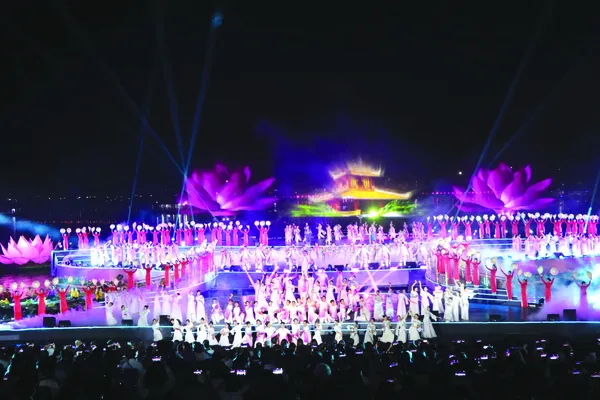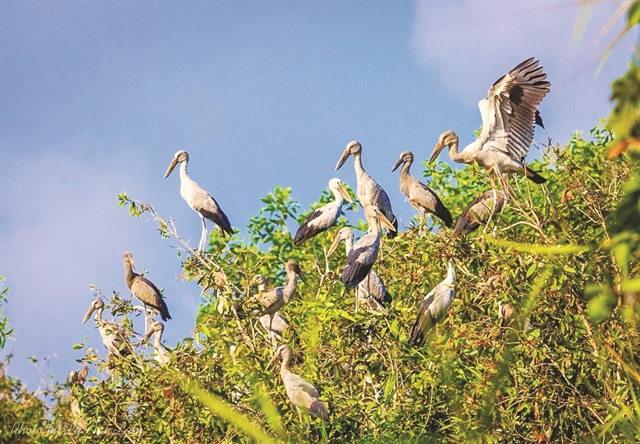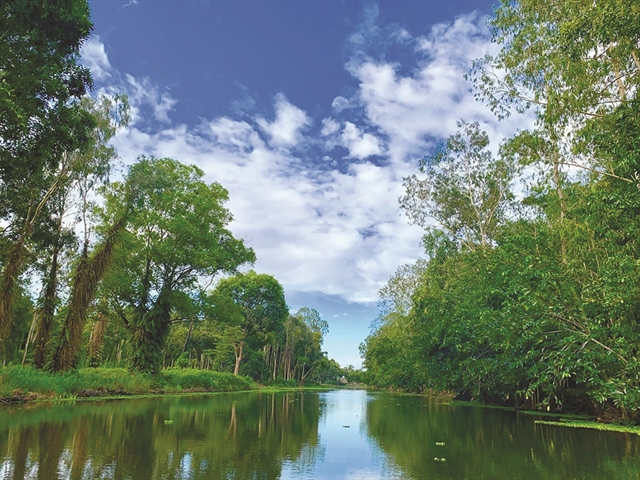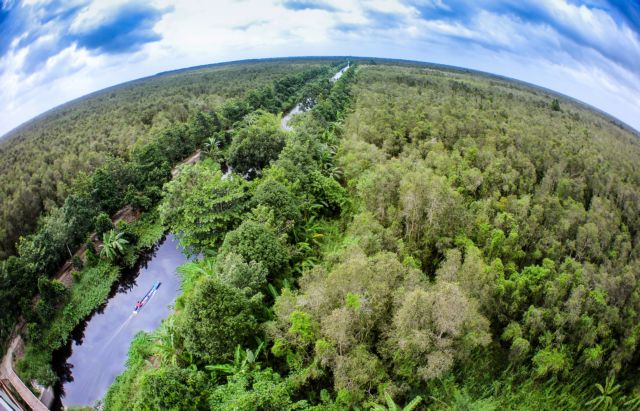 Features
Features

Endowed with unique and ravishingly beautiful landscapes, Lung Ngọc Hòang Nature Reserve in the Mekong Delta province of Hậu Giang is set to become a key attraction for sustainable tourism in the region.

|
| BIRD'S EYE VIEW: Lung Ngọc Hoàng Nature Reserve in Hậu Giang Province is home to hundreds of rare species of flora and fauna. VNA/VNS Photos Huỳnh Phúc Hậu |
Endowed with unique and ravishingly beautiful landscapes, Lung Ngọc Hòang Nature Reserve in the Mekong Delta province of Hậu Giang is set to become a key attraction for sustainable tourism in the region.
The People’s Committee of Hậu Giang Province's recent approval of an ecological tourism development project in the reserve promises an opportunity for visitors to explore and admire the country's natural beauty as well as an area of specialised wetland conservation.
In early June, the Chairman of Hậu Giang Provincial People's Committee, Đồng Văn Thanh, approved the project to protect the forest reserve spanning an area of about 2,800 hectares located in Phụng Hiệp District.
The project will develop the reserve, regarded as the “green lung” of the Mekong Delta, as the largest tourist centre of Hậu Giang and will likely make it a national tourist magnet by 2030.
The provincial authorities have made several surveys on ecotourism development of the core area over the past five years with the help of local and foreign experts.
The reserve is home to hundreds of rare species of flora and fauna including five wild animals in danger of global extinction, including bats, weasels, cats, foxes and otters; 10 species of reptiles, including rooster and scorpion snakes; 135 species of birds including nine species in the Việt Nam Red Book such as grey storks and magpies.

|
| EXPLORATION: Part of the beautiful landscape of Lung Ngọc Hoàng wetland conservation area. |
Along with conserving natural resources and biodiversity, the project will utilise the forest's natural ecological environment to provide eco-tourism services and environmental education in the region, according to a report released by Hậu Giang's Department of Culture, Sports and Tourism.
The project will perfect the technical infrastructure system, establish ecotourism routes, create attractive tours, and turn the reserve into a major tourist attraction, according to the report.
So far, the reserve has upgraded sluices and dams, dredged canals and mobilised personnel to fight possible fires over 2,805 hectares of forest, according to the reserve's management authority in Phụng Hiệp.
Lư Xuân Hội, director of the reserve, said cameras had been installed in three watch towers to monitor for fires.
"The reserve is working closely with other agencies at the provincial and district levels to monitor forests. It has had no fires in the last 18 years," the official said.
The project will help organisations and individuals to use the forest environment for investment plans in eco-tourism combined with forest protection.
"It also focuses on educating local people about environmental protection and ecotourism development; creating jobs and changing occupations for residents in the buffer zone and improving the efficiency of natural resources management, conservation and sustainable development," the report said.

|
| WATERWAYS: Located 40 kilometres from Cần Thơ City, Lung Ngọc Hoàng is considered a hidden gem for anyone who loves the Mekong Delta. |
The project's estimated capital expenditure of VNĐ370 billion (US$16 million) will be mobilised from enterprises, households and the rental income of the forest for ecotourism.
Lung Ngọc Hoàng forest is one of the most unique biodiversity conservation areas of Việt Nam, according to tourists.
Located 40 kilometres from Cần Thơ City, this conservation area is considered as one of Cần Thơ hidden gems for anyone who loves to see the real Mekong Delta beside Cần Thơ floating market and small canals," said a local travel expert.
Director of Vòng Tròn Việt (Vietnam Circle) Tourist Company Phan Đình Huệ told Giải Phóng newspaper that the nature in the region was still wholly intact.
"It is amazing for travel agents specialised in offering tours to foreign visitors because they don’t know about the wonderful nature reserve located in the heart of the Mekong Delta region," he said.
Provincial goals for tourism
Hậu Giang has set a goal of attracting one million visitors, including 70,000 foreigners, by 2025, generating VNĐ1.4 trillion (about US$60.6 million) in revenue and 4,200 local jobs.
The provincial Party Committee has also issued a resolution on developing local tourism with a vision for 2030.

|
| GREEN LUNG: An overview of the Lung Ngọc Hoàng Nature Reserve which spans bout 2,800 hectares of wetland in Phụng Hiệp District, Hậu Giang Province |
Under the plan, the province will be turned into an attractive destination for river tourism and eco-agricultural tourism in the Mekong Delta with a target of welcoming 500,000 visitors by 2020, including 30,000 foreigners. The figure is expected to double by 2025.
The province is implementing several key tourism infrastructure projects, such as the eco-tourism at Mùa Xuân agricultural complex, the Phú Hữu eco-tourism resort, and Lung Ngọc Hòang eco-tourism sites, to name just a few.
It has also invested in developing tourism based on local strengths, such as tours to facilities processing local specialties such as pineapple and fish, as well as orchards.
The province is expanding cooperation with other provinces and cities in the region to reach more markets and attract more investors in tourism.
It has approached a number of companies and investors with strong financial capacity and experience to persuade them to invest in agricultural tourism.
Successful models will then be increased. The province’s Department of Agriculture and Rural Development also plans to develop models combining smart agriculture and tourism.
The province's plan to develop Lung Ngọc Hoàng has achieved widespread support including from local people and officials as well as culture and tourism experts and businesses.
Nhâm Hùng, a local cultural researcher, said he was very happy about the project for Lung Ngoc Hoang Nature Reserve.
"For decades, we have considered exploiting tourism here, but until now there was not an official project,” said Hùng.
“To avoid obstacles that similarly occurred in other tourist areas, I think it is necessary to build tourism infrastructure in the way of a ‘soft space’ focusing on natural environment protection to minimize ‘concretisation'."
"We should try to avoid negative impacts on ecosystems and natural habitats and carry out research on historical and human values to have more materials for building a more diversified and rich tourism culture."
He also suggested creating a 'now and then' tourism space that combined the old with the new, and to consider local residents inside or outside the reserve as an element of tourism.
"With good and methodical preparation, I hope that Lung Ngọc Hoàng will be a typical, unique, attractive eco-tourism site, worthy of being a tourism hub in the Mekong Delta," he said. VNS




